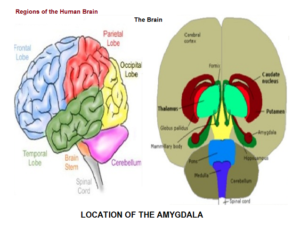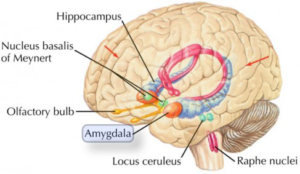International Intelligent Robots as psychoanalytic software
New research possibilities should make it possible through technology to program psychoanalytical software to draw attention to deficits in interpersonal relations, as well as to neurotic transmission of phenomena in forms of projections within human relations. The content of this software program should take place in the form of questions and explanations, objectively in the mediation of interpersonal conflicts, preventively applicable before the chronification of illness. What does overcoming early childhood repression of trauma through psychoanalysis and Christian faith in the healing process mean? It means that people become more successful at the level of interpersonal relationships through self-reflection, empathy, healthy communication and world understanding. The repressed traumas actually have a destructive infantile influence on the pattern of behavior, which manifests itself in the form of reductions under which interpersonal relationships suffer. At this point, the author refers to Chapter I: What can be understood by repression-faith-healing?
Displacement of all early childhood traumas, including bitterness or injuries, of the current life, which were not treated but also displaced and which manifest themselves as pathological symptoms. This has various influences on the quality of life. Their own belief in conviction makes people trust in the dimensions of hope, healing, love and the power of the source of faith. This strengthens immunity and leads to a reduction of negative influences. Healing is the result of one’s own conviction of the power of faith and with the help of psychoanalysis, both have an important role in the healing process.
Amygdala in healing and interpersonal relationships
The Amygdala
A brief overview at the Emotional Center of Human Walkers in the limbic system and also the Amygdala’s function in the healing process and in interpersonal relationships plays a positive role.
The amygdala (the so-called amygdala core) is a center in the limbic system and is the seat of emotions and fear, which plays an essential role in interpersonal relationships. The amygdala is an important part of our brain. The name amygdala originally comes from Greek and means almond kernel/corpus amygdaloideum. Anatomically, the amygdala is part of the limbic system. Located in the anterior part of the temporal lobe, it consists of two similar nuclei in front of the hippocampus near the Caudatus nucleus and on the lower horn of the lateral ventricle. The amygdala can be divided into three different zones:
I. Basolateral complex
It contains the three neighboring nuclei Nucleus basalis, Nucleus lateralis and Nucleus basolateralis.
II Centromedial core group
Consisting of Nucleus centralis and Nucleus medialis (Putz & Pabst 2000)
III. Cortical core group
It contains the nucleus corticalis. Numerous nerve fibers connect these core groups with each other. As a result, they interact with each other. Furthermore, the amygdala is connected to the brain stem and diencephalon, where the hypothalamus and the basal ganglia lie (ibid.).
Anatomy of the amygdala
Fig.1: Amygdala
Source: https://bit.ly/2qnoqHR)
Physiology of the Amygdala
“The limbic system of emotional intelligence includes hippocampus, amygdala, gyrus cinguli. Amygdala: there are traces of memory in it, whether events or situations are pleasant or harmful for the organism.” (Klußmann & Nickel 2009).
From a physiological point of view, in Putz and Pabst, the amygdala plays a role in human emotions and cognitive consciousness. The subcortical amygdala core is part of the limbic system and belongs to the most important center of perception. Besides regulating emotions, the amygdala also prepares us for danger. In this context, the amygdala has a vital function. The instinctive reaction program is used in the case of danger the
and implemented in corresponding actions. Those affected perceive this process as a survival strategy.
It also controls fear via the emotional memory, whereby the speed up to the conversion into emotion is organized and executed by the amygdala. The main task of the amygdala is the production and processing of anxiety states and the associated physical reactions. Their responsibility is to drastically increase heart rhythm in dangerous situations, causing breathing to stall. The motor system in the brain is triggered by the amygdala. By releasing adrenaline, the body is warned of imminent situations by fighting or fleeing (Putz & Pabst 2000).
Amygdala is one of emotional intelligence
Fig. 2 The physiology of the amygdala
Source https://bit.ly/2v7nYSG)
The instinctive control of anxiety runs through the prefrontal cortex PFC in collaboration with the pyramidal and extrapyramidal system together with the amygdala. The hippocampus as the central memory of emotions also plays an important role. Lammers points out that the amygdala is able to recall previously repressed emotional experiences into the present in the form of memories (Lammers 2007). This entire process plays an important role in the behavior of interpersonal relationships. The amygdala can also amplify certain emotions, such as anger or fear, as well as recognize past situations in experienced current situations. All traumatic experiences of childhood are stored by the amygdala, but made inaccessible to consciousness and subsequently compared with painful events. Therefore, physical states are finally triggered by the reaction of neurotransmitters and hormones.
Early childhood trauma can make it difficult to encounter new contacts and to get to know new contacts: For example, we could get to know someone and without noticing it, an unpleasant feeling arises but we do not know where it comes from. This leads to a condemnation towards the person, whereby we are not aware of what exactly disturbs us about him. The answer is found in the repressed unconscious, stored in the hippocampus. For Lammers this could be traced back to the fact that in the past we had a negative experience with people whose image reminds us of these experiences and makes it more difficult to make new contacts (Lammers 2007).
Over-stimulation of the amygdala leads to anxiety and panic disorders. These symptoms are perceived unconsciously without memories of repressed, traumatic events. A lack of functioning of the amygdala, on the other hand, results in several symptoms: autism, concentration disorder, depression, post-traumatic stress disorder and narcolepsy. If the amygdala is affected by a lack of supply as well as genetically, people have difficulty reading emotions on their faces. In particular, patients do not feel fear and cannot recognize it in others. As mentioned above, the amygdala not only plays a role in emotional, rational processes, but also in intuition and communication among people (Klußmann & Nickel 2009).
New research is needed
My practical experience has shown that it is not possible for all people who need therapy to get to the therapies. That is why this is not possible? Because it is an unconscious resistance, fear of therapy, repressed traumas, time and financial deficiencies.
A Reflection on Invention International “Intelligent Robots” as Psychoanalytic Software
Beyond my research, technology should make it possible to program psychoanalytic software to draw attention to deficits in interpersonal relationships, as well as to neurotic transmission of phenomena in forms of projections within human relationships. The content of this software program should take place in the form of questions and explanations, objectively in the mediation of interpersonal conflicts, preventively applicable before chronification of illness. What does overcoming early childhood repression of trauma through psychoanalysis and Christian faith in the healing process mean? It means that people become more successful at the level of interpersonal relationships through self-reflection, empathy, healthy communication and world understanding. The repressed traumas actually have a destructive infantile influence on the pattern of behavior, which manifests itself in the form of reductions under which interpersonal relationships suffer. At this point, the author refers to chapter I. What can be understood by repression-belief-healing? Andrawis A, (2018).
Displacement of all early childhood traumas, also bitterness or injuries, of the current life, which were not treated, but also displaced and which manifest themselves as pathological symptoms. This has various influences on the quality of life. Faith lets people trust in itself through their conviction in the dimension of hope for healing and through the natural source of faith. This strengthens immunity and leads to a reduction of negative influences. Healing comes through faith and psychoanalysis, both of which have an important role in the healing process (ibid.).
Univ. Prof. Dr. Andrawis



